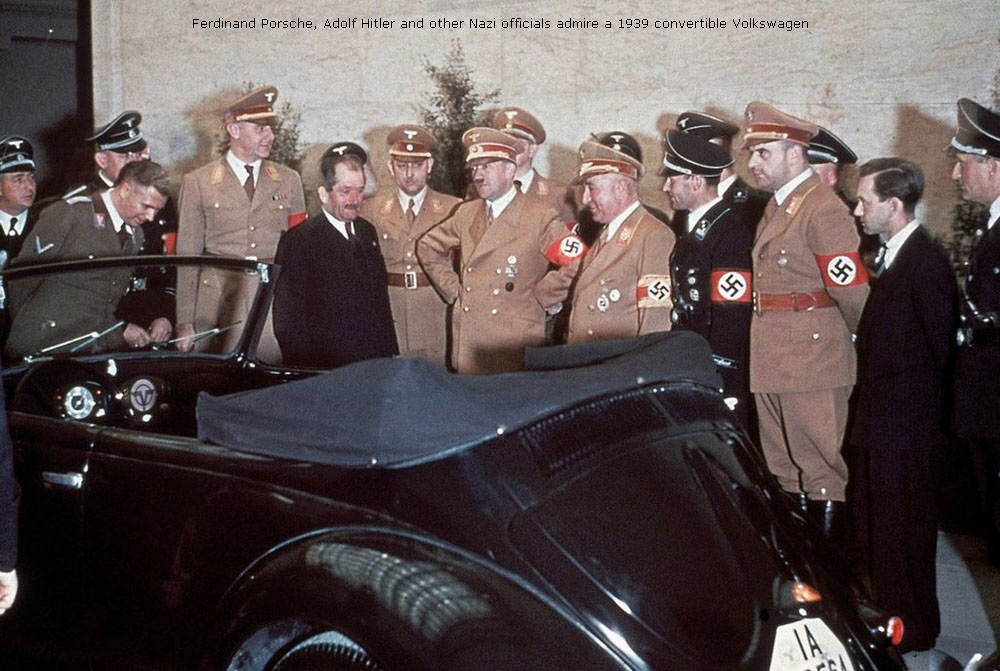|
Ferdinand Porsche married Aloisia Johanna Kaes in 1903. The marriage produced two children, Louise and Ferdinand Anton Ernst ("Ferry"). His daughter Louise later married the Viennese attorney-at-law Dr. Anton
Piëch. After his death in 1952, she assumed management of Porsche Konstruktionen GmbH, the predecessor of the contemporary Porsche Holding in Austria. After the war, his son Ferry assumed management; his flair for business
turned the design and engineering company into a world-famous sports car producer.
In 1906, after eight years at Lohner, Ferdinand Porsche took up the position of Technical Manager at Austro-Daimler in Wiener
Neustadt. He became General Manager in 1917. In 1910, at the wheel of an Austro-Daimler car that he designed himself, Ferdinand won the "Prinz-Heinrich Race", which was popular at that time. It was a long-distance test for
touring cars with annual varying routes. On that particular year, it was 1,495 kilometres long, and extended from Berlin through Magdeburg, Braunschweig, Kassel, Würzburg, Nuremberg, Stuttgart, Strasbourg and Trier to the
finishing point at Bad Homburg. Ferdinand Porsche reached top speeds of up to 140 kilometres per hour on the track with his novel, aerodynamic, "tulip-shaped" car.
In 1922, Ferdinand Porsche presented the "Sascha",
a small 4-cylinder racing car with a displacement of 1.1 litres. At first go in the same year, the "Sascha" snapped up first and second places in its particular category in the Targa Florio race in Sicily. Gazetta dello Sport
commented on its success as follows: "Up until very recently no one would have dreamed it possible to achieve such top speeds and durability with a 4-cylinder engine belonging to the category of smallest cars ever." During the
course of his employment as Technical Manager, Ferdinand Porsche created numerous designs, including high-performance aircraft engines and large tractive machines, as well as fire engines, trolley buses and transport systems
with hybrid petrol-electric drive.
Ferdinand Porsche joined Daimler-Motoren-Gesellschaft in Stuttgart as a Technical Manager and an Executive Board member in 1923. He oversaw enhancement of the Mercedes compressor
car. In 1924, he became the overall winner of the Targa Florio race in this car. The Institute of Technology (Technische Hochschule) in Stuttgart conferred the honorary title of Dr. Ing. on Ferdinand Porsche following this
great achievement. His compressor designs Mercedes-Benz S, SS and SSK became synonymous for sportiness and racing success. Dr. Porsche left the company in 1929 and took up the position of Technical Manager at Steyr-Werke AG in
Austria.
One and a half years later, Ferdinand Porsche set up his own independent design office, which was recorded in the Commercial Register on 25th April 1931 as "Dr. Ing. h. c. F. Porsche GmbH, Konstruktionen
und Beratung für Motoren und Fahrzeuge" (design engineering and consultation for engines and vehicles). Already on 10th August 1931, the torsion bar suspension was registered as a patent, which a well-known specialist
journalist later commented would have sufficed to commemorate the Porsche name in the automobile world. In 1932, Porsche was contracted by Auto Union to design a 16-cylinder compressor Grand Prix racing car for the new 750-kg
formula. The Auto Union P-car (P for Porsche) won 32 races out of 64, and drivers such as Hans Stuck and Bernd Rosemeyer set many world records in it.
Ferdinand Porsche was already mulling over the idea of building
a small car when he was at Austro-Daimler and Daimler-Benz. He wanted to create a high quality car suitable for everyday use, which was not just a smaller version of the known saloons.
On 22nd June 1934, a contract was
concluded between the Porsche design office and the Reichsverband der Automobilindustrie (the umbrella organisation of the German automotive industry, which later became the Verband der Automobilindustrie (VDA)). It was the
hour that Volkswagen was born. The founding stone was laid for the Volkswagen plant in 1938. In the following period, Ferdinand Porsche was one of the general managers of Volkswagen GmbH. Shortly before production started, the
Second World War broke out. The Volkswagen initially served as a basis for developing the all-terrain or amphibian car.
In 1940, Ferdinand Porsche was conferred the honorary title of professor. During the war, the
construction office developed the "Mouse" heavy tank and the "Ostrad" tractor, for example, and also worked on constructions such as wind generators or the people's tractor (Volkstraktor). In autumn 1944, the Porsche design
office was relocated from Stuttgart to Gmünd/Carinthia. Ferdinand Porsche lived in Gmünd/Carinthia and Zell am See towards the end of the war.
Ferdinand Porsche was arrested by the French at the end of 1945, and
was subsequently held for 22 months in various prisons. Upon his return, he examined the design of the racing car Cisitalia, which was constructed under the management of his son Ferry. After close observation, he came to the
conclusion: "I would have built it exactly the same, right down to the last screw."
At the age of 75 Professor Dr. Ing. h.c. Ferdinand Porsche died 1951 in Stuttgart.

|